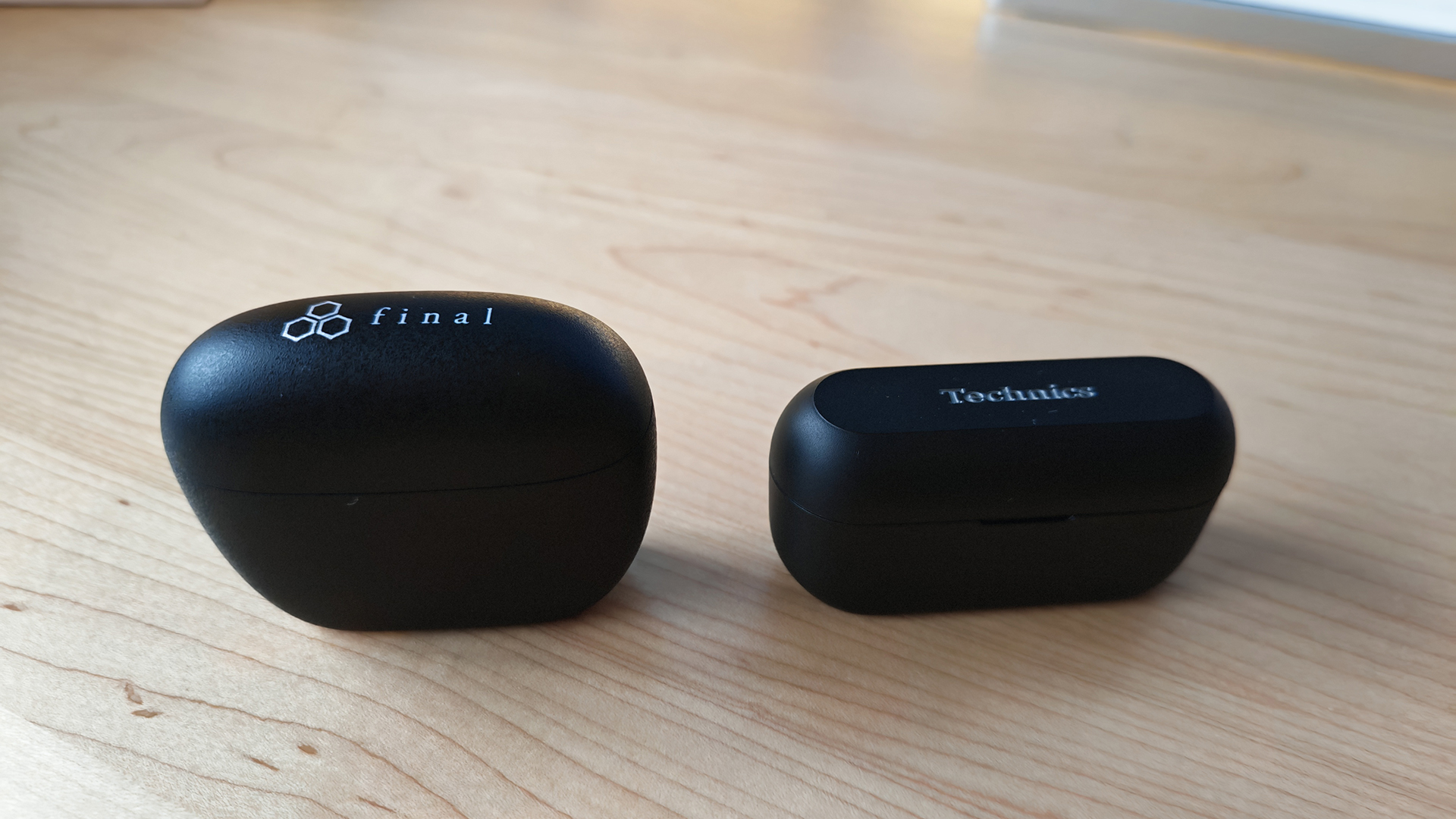These cutting edge earphones scan your ear canals for a personalised audio experience
I tried them out, and the difference in sound is remarkable.

The Japanese audio company Final, known for high end earphones that can cost up to $2,000, have Kickstarted their new $329 earphones, Tonalite, with the first 500 backers getting 25% off.
But these 'budget' audiophile earphones offer something new and exciting that's missing from their more expensive products (and all other earphones, for that matter). With its Digital Twin Audio Simulation (DTAS) technology, Tonalite promises to offer unparalleled personalisation, and tonal accuracy.
How does it work? Well, we all have distinct variations in our ear canals that can alter how we perceive sound. With DTAS, Final claims, all these variations can be countered, so every user should hear Tonalite's sound profile exactly the same. In addition, Final say that Tonalite will offer a superior timbre – the tonal colour that distinguishes each instrument and vocal from each other.
I received a pair last week, and after 20 minutes of 'ear canal acoustic measurements', which included taking selfies and sending sound pulses from the earphones to map my ears, I was ready to hear my personalised sound. The results were interesting.
The science bit

Final promise to harness their DTAS engine to simulate how sound travels to the user's eardrum, recreating how someone perceives timbre. In fact, their claim is bolder than that: 'TONALITE achieves natural and accurate timbre reproduction that conventional approaches cannot attain,' their Kickstarter page claims.
Don't be confused – Final is not promising a 'perfect sound'. Instead, they are promising that the specific sound profile of the Tonalite earbuds should be heard exactly the same by every user. Whether you like that sound profile is another matter.
The 'general' sound


Never before has reviewing an audio device been as daunting as this. Whereas usually an audio critic can hide behind, 'well, at least that's what I hear', theoretically, Tonalite nixes all subjective interpretations, and each user is presented with an objective sound profile. We should all be hearing the same sound.
I'm going to talk about both the stock, 'general' profile and my (our?) 'personalised' profile.
Straight out the box, things are a bit dicey. In 'general' mode, the earphones have an overbearing lower bass that encroaches onto the lower mids. I’m not getting a lot from the treble either. A quick comparison with the neutral 2023 Technics AZ60M2s, and the latter really puts the Tonalite’s in their place with its balanced profile. Something is wonky with the generalised sound.
Listening to Cherub Rock by The Smashing Pumpkins, with its many layers of instruments, vocals and percussion, and things continue to get messy.
The clarity of the 'general' sound isn't great. Lower bass sounds swampy, and there's a dip in the upper bass that doesn’t have that punch that good upper bass should. Imaging lacks as well – it’s not easy to identify individual instruments and vocals. The lower treble sounds tinny and the mids definitely take a back seat to everything. That’s a long-winded way of saying this general setting is a pretty common v-shaped sound profile.
The 'personalised' sound
OK, but what about Tonalite's objective sound profile? I tap 'personalised', and the sub bass chills out a bit, and the upper bass kicks in, also the lower mids reveal themselves. The vocals bed in better with everything, and there are moments of them shining through.
However, it still sounds like there’s a scooped out lower treble, or upper mids, that affects the drums, especially the snare. There’s a lack of impact and they sound processed.
Moving to the jazzy rock of Slinky Thing by Donal Fagen, and I think it becomes clearer what the Tonalite’s objective sound is about. Swapping a wall of sound with a crisp groove, and things seem a bit more neutral, with a far more chilled out bass profile. The vocals are more forward and it’s all a bit crisp (verging on hollow).
Things are enjoyably warmer, thanks to that added upper bass… but there’s definitely something funky going on in the mids, and I don’t mean Fagen’s keyboard work. The vocals are fuller, less hollow than 'general', but something is still sounding processed, or scooped. There is lots to like here, but also a distinct, distracting scoop that I keep on coming back to... And I can only assume that that's exactly what everyone one else will hear!
Final thoughts
So, how does the personalised sound profile stack up? I think it's better than the general profile, and so, if I am to take Final's word for it, the DTAS technology is doing its job and presenting me with Tonalite's 'true' sound. The sceptic in me questions whether my ear canals could really make that much of a difference to all frequencies.
Unfortunately, the objective sound is not overly appealing to me, with some parts of it (especially the drums) sounding processed. Now, I know that, in theory, Tonalite's sound is objective... but I can't shake the thought that we will all still be hearing variations of the 'Tonalite sound'. Either way, I'm very interested to hear what Final was going for here – and to hear feedback from listeners, to see if they agree/disagree with me. Regardless, it's exciting that Final are breaking new ground in audio... even if I'm not the biggest fan of the final result.
Daily design news, reviews, how-tos and more, as picked by the editors.

Beren cut his teeth as Staff Writer on the digital art magazine ImagineFX 13 years ago, and has since worked on and edited several creative titles. As Ecom Editor on Creative Bloq, when he's not reviewing the latest audiophile headphones or evaluating the best designed ergonomic office chairs, he’s testing laptops, TVs and monitors, all so he can find the best deals on the best tech for Creative Bloq’s creative professional audience.
You must confirm your public display name before commenting
Please logout and then login again, you will then be prompted to enter your display name.
